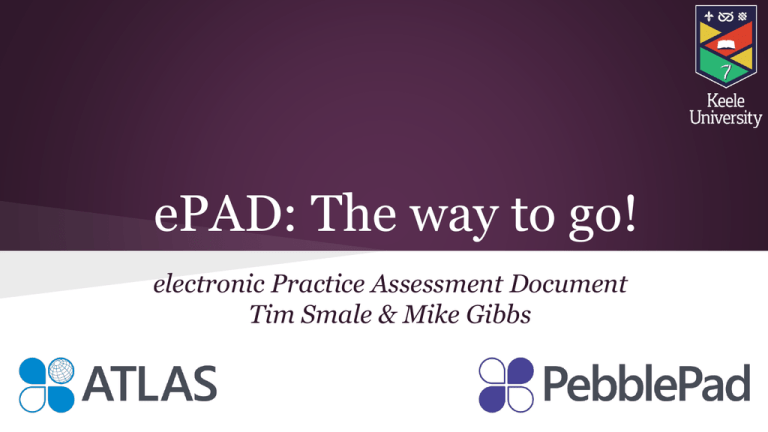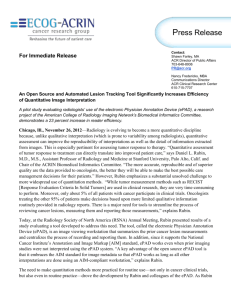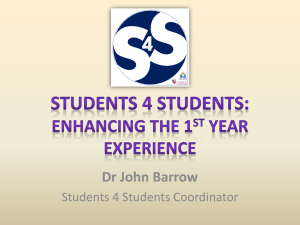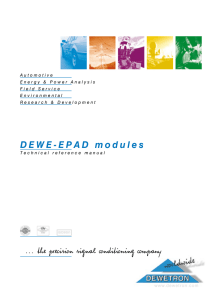ePAD: The way to go! Electronic Practice Assessment
advertisement

ePAD: The way to go! electronic Practice Assessment Document Tim Smale & Mike Gibbs Background ● Visit to Northampton University ● Paperless/cost reduction/environmentally friendly ● Document safety ● Reduce time in assessment ● Flexibility in workload/planning ● Development of partnership working Plan ● To develop an electronic practice assessment document (ePAD) using Pebblepad resources. ● In line with Keele University sustainability policy, to produce a paperless assessment document. ● To evaluate the effectiveness of the ePAD. ● To make recommendation to the Teaching & Learning Committee Creation ● ● ● ● ● ● Nested Workbooks Mostly Assessor fields Lots of duplication of text between fields One off large creation task Testing internally Keeping up to date with PebblePad updates and testing before issues arise ePAD ePAD Training ● Mentors o 1 Mentor to 1 PC o Information Cards ● Students o Full training and specific refresher ● Email support ● Website support ● Phone support Pilot ● Three year pilot starting with September 2013 intake. ● Child and Learning Disability students and their mentors. ● Mentors have access to all students in field. ● Personal Tutors can monitor. ● The Pilot project to be evaluated. ● Allows us to plan for largest group - Adult nursing students. Evaluation Model Based on an adaptation of the Quality Assurance cycle. (adapted from Davies and Macdonald (1998)) Davies, J.K., and Macdonald, G. (1998) Quality Evidence and Effectiveness in Health Promotion. London. Rowntree. Evaluation Process ● Focus Groups - Students - Mentors ● On-line questionnaire ● Personal Tutors Future Plans ● If evaluated well then it would be extended to all fields of Nursing and Midwifery. ● The ePAD would become subsumed into the students PebblePad professional portfolio. Conclusions ● ● ● ● ● Investment needed in relation to time and training Changes in culture settings Responses to evaluation Make use of Assessor only pages It’s working!









